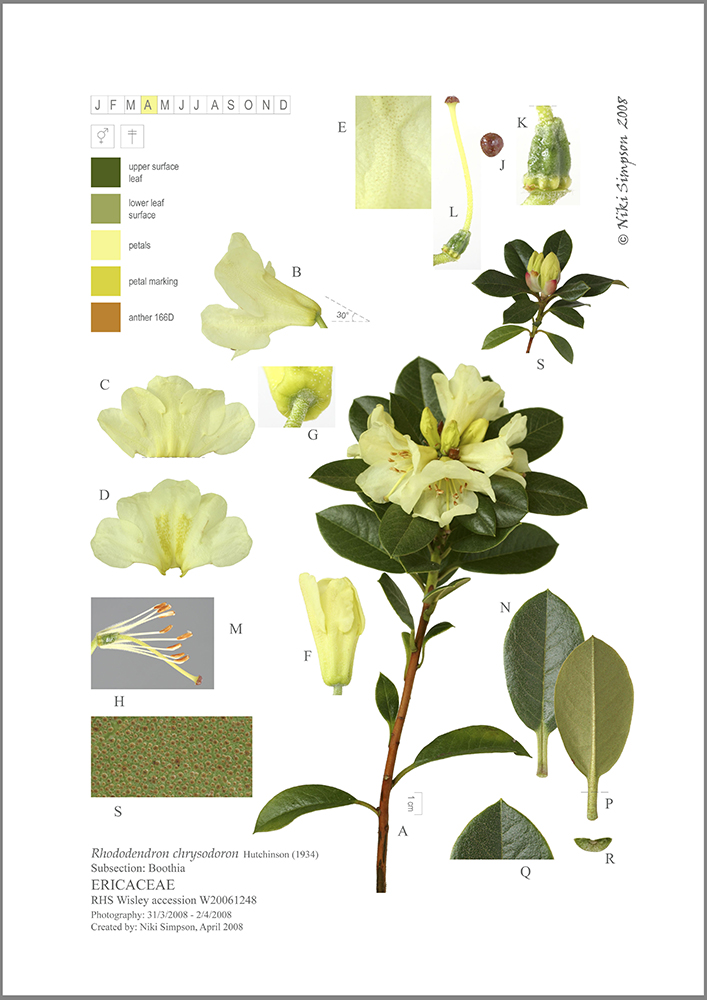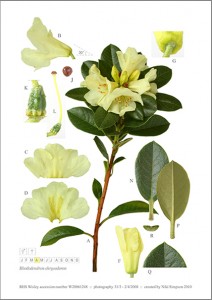7. Re-compositon: flexibility for multi-purpose use
In number 5 of my explanations, I demonstrated one example of the inherent flexibility of these images, by showing one of my ‘standard’ composite portraits simply re-arranged to fit a horizontal format of the same size. If you look back, you can see that both versions contained the same plant parts and that all the parts were shown at the same scale.
Another possibility is to select just some of the parts and used them to construct a smaller sized plate. Fewer parts within an illustration mean that parts can be depicted at a larger scale, and an illustration of the plant may intentionally only need to show a few aspects of the plant in question for the purpose of illustrating an article or flora.
Since each part can be readily and independently moved and/or scaled up or down, the plate can be pretty much endlessly re-composed. In this way numerous alternative layouts are easily possible without resorting to further study of the plant. Illustrations can be created to fit different page sizes or to create illustrations which require a different emphasis or captioning, such as might be required for submission to differing journals to suit their varying house styles. Equally further photographs of the same plant held in the library of images of plant parts, but which were not already contained within the standard portrait, may added to the composition to achieve a different emphasis and hence use of the illustration.
Left hand image: standard plate; Right hand image: re-composed illustration
Both images © Niki Simpson
To show what I mean, I have re-composed my ‘standard’ composite style illustration of a rhododendron (on the left) to a smaller and differently arranged plate on the right – to suit a smaller journal page, for example a ‘Curtis’s Botanical Magazine-style’ illustration. The plate size has been reduced, the overall rectangle proportion altered slightly, certain plant parts have been excluded, alterations have been made to the text components and one part (the flowering branch) has been enlarged relative to the other parts and fill the plate, in order to suit the journal’s style.
This is just one example – many more combinations and variations are possible!


